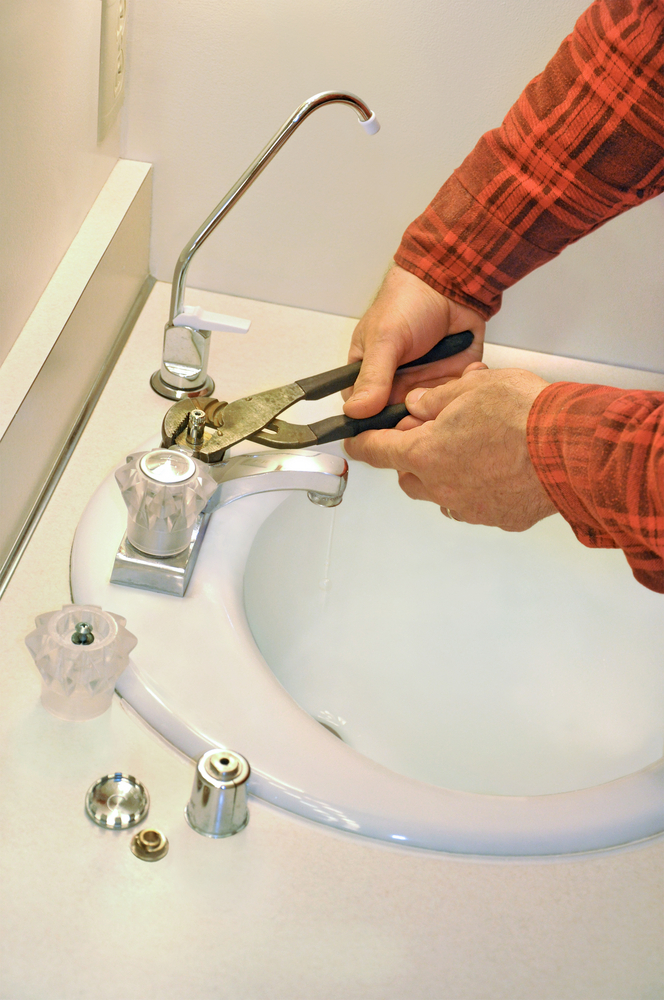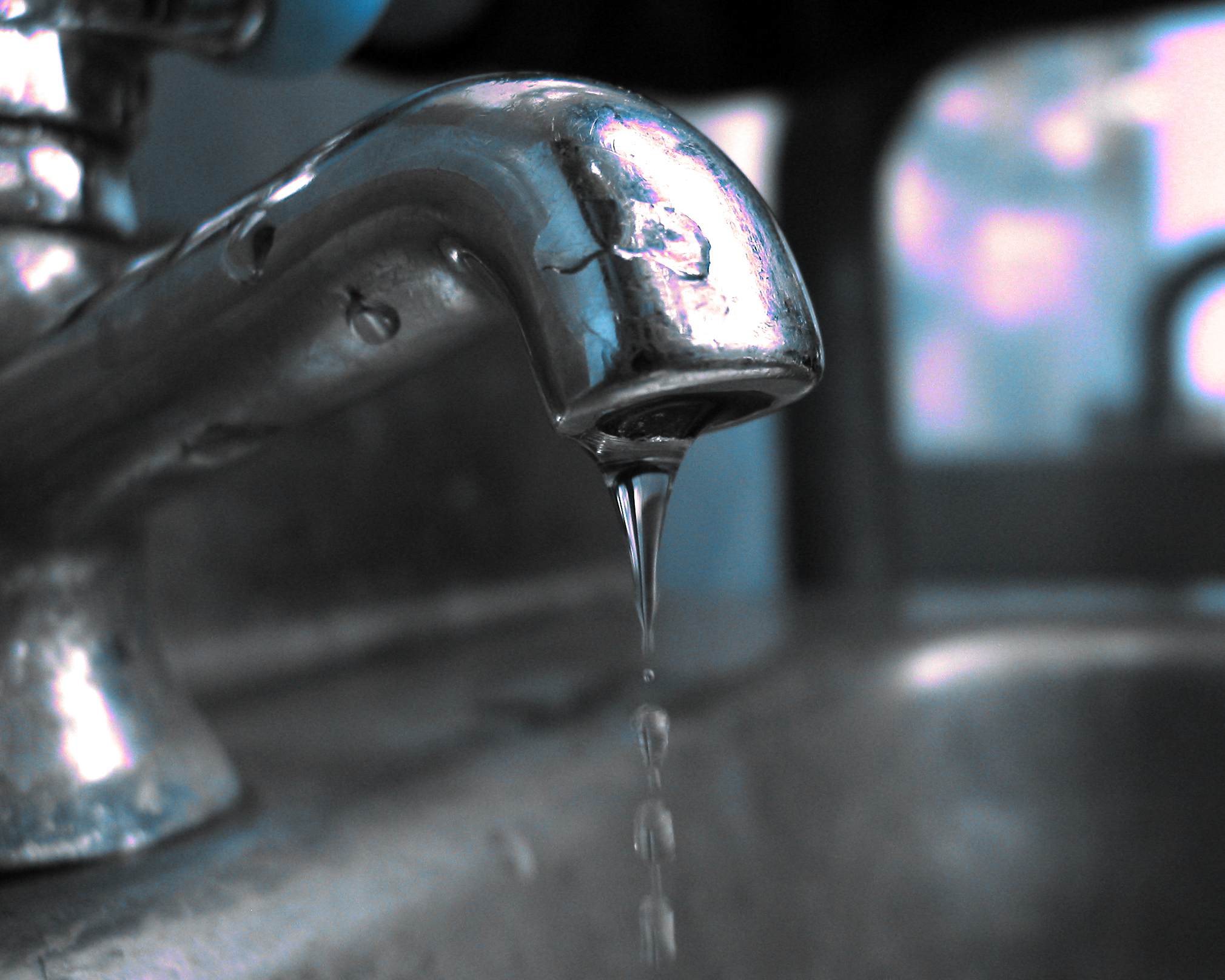When It's Vital to Fix a Leaking Faucet
When It's Vital to Fix a Leaking Faucet
Blog Article
We have unearthed the article about How to Fix a Dripping or Leaky Faucet directly below on the web and reckoned it made good sense to quickly share it with you on my blog.

Leaking taps might look like a small aggravation, but their impact goes beyond just the inconvenience of the sound. From drainage to incurring unnecessary financial costs and health risks, neglecting a leaking faucet can bring about numerous effects. In this post, we'll explore why it's important to resolve this usual household issue quickly and efficiently.
Wastage of Water
Environmental Effect
Dripping taps add substantially to water waste. According to the Environmental Protection Agency (EPA), a solitary faucet trickling at one drip per second can squander greater than 3,000 gallons of water per year. This not just stress water resources however also influences communities and wild animals dependent on them.
Financial Expenses
Increased Water Expenses
Past the environmental effect, leaking taps can inflate water expenses substantially. The collected wastage gradually translates right into greater utility costs, which can have been avoided with timely fixings.
Prospective Home Damages
Furthermore, extended trickling can lead to damage to fixtures and surface areas bordering the tap. Water buildup can create staining, corrosion, and even architectural concerns if left neglected, leading to extra fixing expenses.
Health and wellness Problems
Mold And Mildew and Mold Development
The consistent existence of dampness from a leaking faucet creates an optimal atmosphere for mold and mildew and mildew growth. These fungi not just endanger indoor air high quality but additionally pose wellness risks, specifically for individuals with respiratory conditions or allergic reactions.
Waterborne Illness
Stagnant water in leaking taps can become a breeding place for microorganisms and other virus, boosting the risk of waterborne illness. Impurities such as Legionella bacteria flourish in stationary water, possibly resulting in major ailments when ingested or inhaled.
DIY vs. Professional Repair work
Benefits and drawbacks of Do It Yourself Repair Service
While some might try to deal with a trickling tap themselves, do it yourself fixings feature their own collection of obstacles. Without correct expertise and tools, DIY attempts can exacerbate the problem or bring about incomplete repair work, lengthening the trouble.
Advantages of Employing an Expert Plumber
Hiring an expert plumber guarantees that the underlying cause of the leaking faucet is resolved successfully. Plumbing technicians have the experience and devices to diagnose and fix tap issues effectively, conserving time and minimizing the risk of additional damage.
Step-by-Step Overview to Dealing With a Dripping Tap
Devices Called for
Prior to trying to fix a trickling faucet, gather the necessary devices, consisting of a flexible wrench, screwdrivers, substitute components (such as washers or cartridges), and plumber's tape.
Common Tap Issues and Their Solutions
Recognize the kind of faucet and the certain concern causing the drip. Common troubles consist of worn-out washing machines, corroded valve seats, or malfunctioning O-rings. Refer to producer instructions or on the internet tutorials for step-by-step guidance on repair work.
Preventive Measures
Normal Upkeep Tips
To avoid leaking taps, execute routine maintenance such as cleaning up aerators, inspecting for leakages, and replacing damaged parts quickly. In addition, consider setting up water-saving devices or updating to more efficient fixtures.
Value of Prompt Fixes
Addressing dripping faucets as soon as they're noticed prevents further water wastage and potential damage, eventually conserving both water and cash in the future.
Influence On Home Worth
Assumption of Well-Maintained Building
Preserving a residential property in good condition, including dealing with upkeep problems like trickling taps, enhances its viewed worth and desirability among possible buyers or lessees.
Influence on Resale Worth
Residences with properly maintained plumbing fixtures, including taps, command greater resale worths in the property market. Addressing leaking taps can add to a favorable impression during home assessments and arrangements.
Ecological Duty
Specific Payment to Conservation
Taking obligation for taking care of leaking faucets lines up with broader efforts towards water preservation and ecological sustainability. Every individual's actions jointly make a considerable effect on preserving priceless resources.
Lasting Living Practices
By prioritizing punctual repair work and embracing water-saving routines, people contribute to sustainable living techniques that profit both existing and future generations.
Final thought
Addressing a leaking faucet surpasses simple convenience; it's an essential action toward saving water, reducing monetary expenses, and safeguarding health and wellness and residential property. Whether through DIY fixings or professional support, acting to take care of trickling taps is a small yet impactful way to promote liable stewardship of resources and add to a much healthier, more sustainable future.
How to Fix a Leaky Faucet: Step-by-Step Repair Guide
A leaky faucet may seem like a simple annoyance, but if it's not fixed promptly, that leak could cost hundreds to potentially thousands. From water damage to mold, mildew, and high water bills, even a tiny leak can be catastrophic if left unattended. Damage like this can even affect the overall value of your home, so it's important to take the right approach for leaky faucet repair. You may need the help of a plumber in some cases, but we've got a few tips you can try on how to fix a leaky faucet before calling the pros.
Four Faucet Types
When you're learning how to fix a leaky faucet, the first step is knowing what kind of faucet you're working with! There are four common types.
Cartridge Faucets
Cartridge faucets come in one- or two-handled varieties. In one-handled cartridge faucets, hot and cold water combines in a single cartridge. In the two-handled versions, hot and cold water are controlled separately and mixed in the faucet.
Ball Faucets
Ball faucets have a single lever you push up and down to adjust the pressure and rotate to change the temperature. A slotted metal ball controls the amount of water allowed into the spout.
Compression Washer Faucets
They're the oldest type of faucet, but they're still used in many homes — especially older ones. Compression faucets have two separate handles that, when turned, raise or lower the washer that seals a water valve. This valve stops water from flowing through the faucet when it is turned off.
Disc Faucets
Disc faucets rarely need to be repaired due to their maintenance-free design. The water flow is controlled by two discs — the upper one raises and lowers against a fixed lower disc, creating a watertight seal. If your disc faucet starts leaking, you may need to replace the seals or clean residue buildup from the inlets.
Fixing a Leaky Faucet
Step 1: Turn Off the Water
Whether you're learning how to fix a leaky bathtub faucet or how to fix a leaky kitchen faucet, always turn off the water supply to your working area when you're fixing a leak. The last thing you want is a flood added to your list of things to fix.
Look for the shutoff valves below your sink or around the tub and turn them clockwise to stop the water flow. If your faucet doesn't have shutoff valves, you may need to turn off the water for the whole house. Check to make sure it's off by turning the faucet on. If nothing comes out, you're ready to start the repair.
Step 2: Take Apart the Faucet
How you disassemble your faucet depends on the type of fixture you have. You can use a flathead screwdriver to remove the caps on top of the handle or handles for cartridge and compression faucets. Inside, you should see handle screws. Unscrew these with a screwdriver to remove the handle.
Disc- and ball-style faucets will typically have an inlet screw near the handle, and removing that will reveal the interior of the faucet.
Detach the Valve Stem
For cartridge- and compression-style faucets, you'll see the inner valve stem or cartridge once you remove the faucet handles. If you have a compression faucet, unscrew the brass valve stem. If you have a cartridge faucet, pull out the cartridge. If your cartridge has been in place for a while, it may require some tools or extra force to remove it due to mineral deposits.
Examine and Replace Parts
Once you've removed the parts, check them out to confirm what needs to be replaced. You may see corroded rubber washers, O-rings, stems, or cartridges. On a ball-style faucet, check the seats and springs for damage.
If you need to repair a leaky disc faucet, check the inlet and seals on the lower disc.
Once you determine what parts must be replaced, visit your local hardware store. Bring the damaged parts with you to ensure you can purchase the correct components to replace them.
Clean Valves and Faucet Cavity
If you've removed a stem or cartridge, you may notice mineral buildup in the faucet's threads. Use white vinegar to clean the valve seat by soaking it for a few minutes, then scrub it away with a soft toothbrush and rinse with warm water. You can also clean the interior of the faucet in the same way.
Reassemble the Faucet
Once your faucet is cleaned and the required parts have been replaced, it's time to reassemble it. Put the pieces back together and slowly turn the water supply back on. Doing this slowly is crucial because too much initial water pressure can damage the new hardware you've just installed.
https://homewarranty.firstam.com/blog/how-to-fix-leaky-faucet

As an enthusiastic reader about Should I Repair or Replace a Leaky Faucet?, I was thinking sharing that information was a smart idea. Are you aware of another person who is curious about the topic? Do not hesitate to share it. I recognize the value of your readership.
Report this page